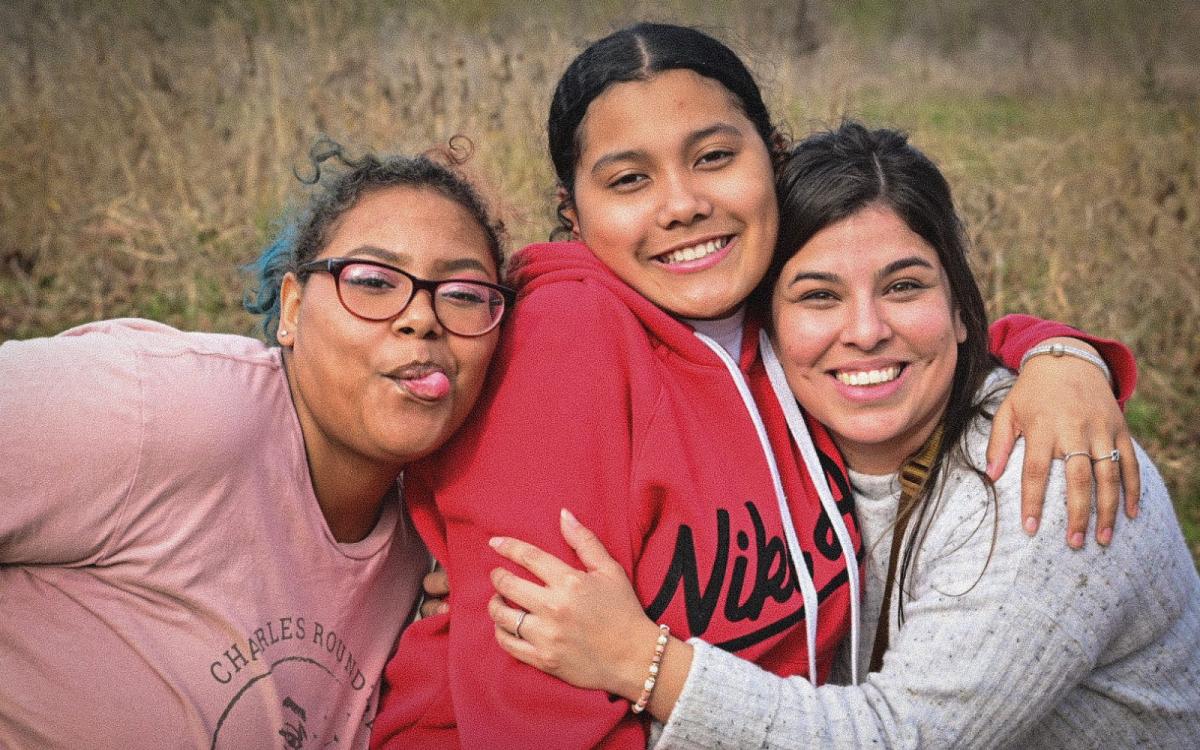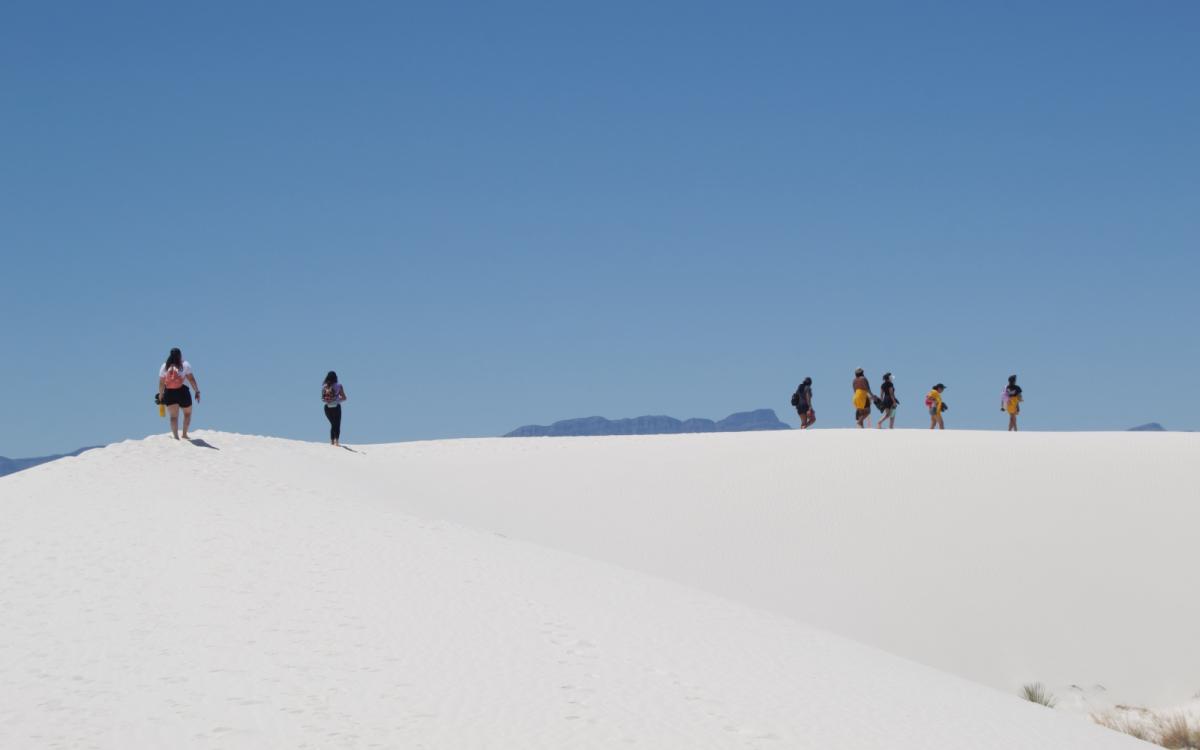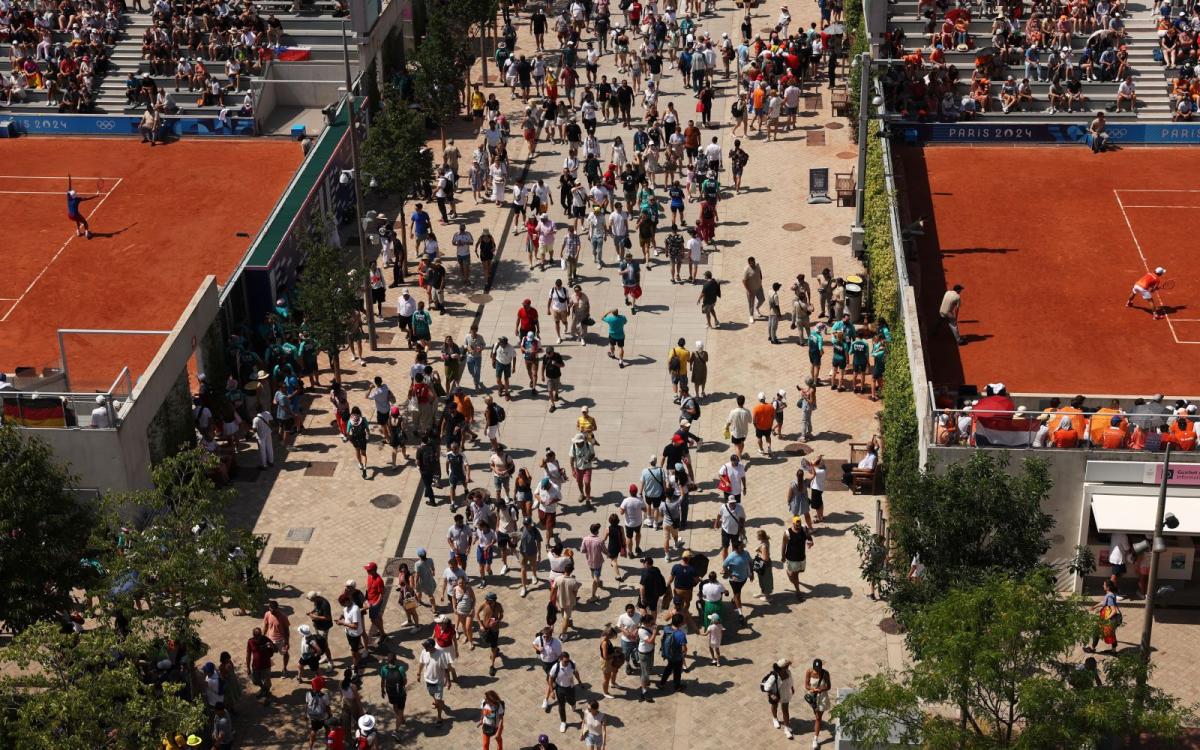vision
“How can healing our relationship with the Earth help us heal our relationship with ourselves?”
Kiamber Thompson
Spotlight
Being outdoors can be therapeutic. Spending time in nature can bring about amazing changes, both physical and mental. Mental health benefitsand develop an understanding of the land and ecosystems around us and our role in protecting them.
That’s the idea behind this Charles Roundtree Bloom Projectis an outdoor program in San Antonio dedicated to serving young people whose families have been affected by incarceration. The organization offers activities like camping trips, surfing, and community gardening, and also incorporates meditation, journaling, and other exercises to promote self-reflection and empowerment.
“We’re not just about promoting outdoor activities or addressing environmental issues on an environmental level,” says Kiamber Thompson, founder of the program. “We also do deep healing work with our participants, thinking about sustainability, not just environmentally, but socially, and how it all connects.”
Creating safe and fun experiences also means overcoming the many barriers kids face when it comes to enjoying the outdoors, including historical exclusion from these spaces and persistent narratives that outdoor recreation isn’t for people of color — barriers that are compounded by extreme weather events that make it difficult to recover, let alone stay safe, outdoors.
![]()
Thompson (who uses both “they” and “she” pronouns) started Bloom Project to address a need in her community: After discovering her love of the outdoors while attending college in California, she wanted to provide the same transformative experience for young people in her hometown of San Antonio, particularly those caught up in systems of over-policing, incarceration and environmental injustice.
The work is personal for both Thompson and Gabriela Lopez, the organization’s co-director. Lopez says her father spent much of her life in prison, and as a child she saw nature as a form of therapy that helped her get through it. After working as a teacher for years and seeing how the school system was not doing enough to address the mental health issues and trauma young people were experiencing, she was excited to get involved with Bloom Project. “I feel like I’m facilitating healing in a really intimate way,” she said of Bloom Project’s work. “But at the same time, I’m creating a generation that will be advocates not only for their communities, but for nature, the outdoors and the land.”

Lopez (right) with two Bloom Project participants at the December 2023 retreat. Courtesy of the Charles Roundtree Bloom Project
In creating these experiences, Bloom Project directors know they must push back against the commonly held belief that outdoor recreation is not available to everyone. In Texas, About 95 percent of the land is privately owned.“It’s difficult for white people to access outdoor spaces,” Thompson said, but added that that’s just the beginning of the problem. Despite their best efforts to make outdoor outings safe and enjoyable for everyone, they sometimes feel unwelcome. It’s a microcosm of the issues people of color face outdoors across the country. “We’ve taken camping trips in various state parks and Big Bend National Park in Texas, and we’ve been policed multiple times by white park users,” they said.
Many affinity organizations have sprung up to increase the visibility and safety of outdoor spaces. People of Color, People with disabilities, Queer Peopleand others including Black Outside, the Texas-based organization that has hosted the Bloom Project for the past five years (later this year, the program will spin off as its own nonprofit).
Bloom Project aims to not only increase access to the outdoors, but also use that access to help kids actively speak out against systems of oppression, something they have experienced acutely as children of incarcerated parents. “Knowing how much surveillance exists among Black youth in schools, parks, neighborhoods and homes, Bloom Project affirms young people for who they are and all they bring to the community,” Thompson said. In a way, she said, Bloom Project is an experiment in pre-constructing a better, more just world. Sessions include healing or talking circles for sharing and processing in an intentionally unsupervised environment. And another central part of the program is education that addresses head-on the reality of the challenges emerging in young people’s lives, always in an age-appropriate way, Lopez said.
Earlier this summer, while playing at the park with a group of young children, she led an experiment to test how quickly ice melts on different surfaces—a fun way to learn about the urban heat island effect.
But the heat melting the ice also poses a more pressing challenge to creating safe and enjoyable outdoor experiences. More frequent and intense extreme weather events, like Hurricane Beryl, are likely. They suffered a disappointing loss to San Antonio last month. And the new normal of hotter summers means the very tools Bloom Project uses to promote healing and connection are becoming more difficult to access.
“Summers in San Antonio are really hot,” Thompson said. 70+ days with temperatures above triple digitsBecause of the heat, the group does not conduct camping trips within Texas during the summer.
“It’s really hard. [summer] “School is out, so it’s a time when we can see more young people,” Lopez says. But it’s not necessarily worth the risk, and it doesn’t help the overall mission: “We don’t want to send people out and make them miserable.”
Thompson said some adjustments have included starting activities earlier in the day before it gets too hot outside and focusing on basic protection like hats, sunscreen and shade. The group is also considering focusing more on water-based activities and indoor sessions during hotter months.

Bloom Project participants visit White Sands National Park in April 2023. Courtesy of the Charles Roundtree Bloom Project
A new program that Bloom Project will be piloting later this summer is: Latin Outdoor And that Casey Family FoundationThe organization, which aims to improve the foster care system, is running a four-month special program called Wild Trails Fellowship, which focuses less on recreation and more on education and career pathways in various environmental and outdoor sectors. Lopez said the first meeting will be at an REI store, where high school-aged participants will go on an indoor treasure hunt, assemble first aid kits and, hopefully, hear a talk from the store manager.
Across the country, outdoor access, education and recreation organizations are grappling with the same challenges. Jose Gonzalez, founder of Latino Outdoors, said he is organizing a national event for the first time this year. Latino Preservation Week Heat concerns are causing the event to move from late July to late September, and even if the event isn’t canceled or postponed, extreme weather is increasingly part of planning. “Many people don’t know how the heat can affect them, or how to recognize heatstroke, for example, so it’s important to take that into account as part of risk management and participant education,” he said.
May, outdoor education group Outward Bound coordinated three events Held in Vancouver, Halifax and Toronto, over 60 groups from across Canada came together to discuss ways the outdoor sector can adapt to and participate in mitigation efforts for climate impacts. As one conservation program manager noted, “climate change has forever changed the landscape of outdoor education.”
The reality of climate change further complicates the challenges faced in creating uplifting and joyful outdoor experiences, but also makes the work all the more urgent. Ultimately, the Bloom Project’s goal is to inspire young people with agency and radical imagination to help bring about a healthier, more just world, Thompson said.
“In justice education, sometimes the focus is on everything that matters,” Thompson says. “That’s true, and it’s important to be educated about that.” But the key, they say, is striking the right balance, and creating the right container that allows for moments of somberness alongside moments of reflection and joy. “Joy is what sustains us, and being able to access it and tune into it is a great way to help us.” [not only] I don’t want to be here in the first place, I want to envision a better world.”
— Claire Elise Thompson
Further exposure
Parting words
When extreme heat makes it difficult to find time for rest and relaxation outdoors, it also increases the risk for athletes who push their bodies to their limits in outdoor environments. Competing in the Paris Olympics this summerIn some countries, to protect the athletes Bringing portable air conditioners to the Olympic Village Others, including the Olympic medical department (which is blocking Paris authorities’ plans to make the Olympics greener), Heat acclimatization training as a method of adaptationThis photo shows spectators on the tennis courts at Roland Garros Stadium on July 31, the fifth day of the tournament, when temperatures in Paris reached 90 degrees Fahrenheit.









/cdn.vox-cdn.com/uploads/chorus_asset/file/25697397/STK071_APPLE_N.jpg?w=150&resize=150,150&ssl=1)

